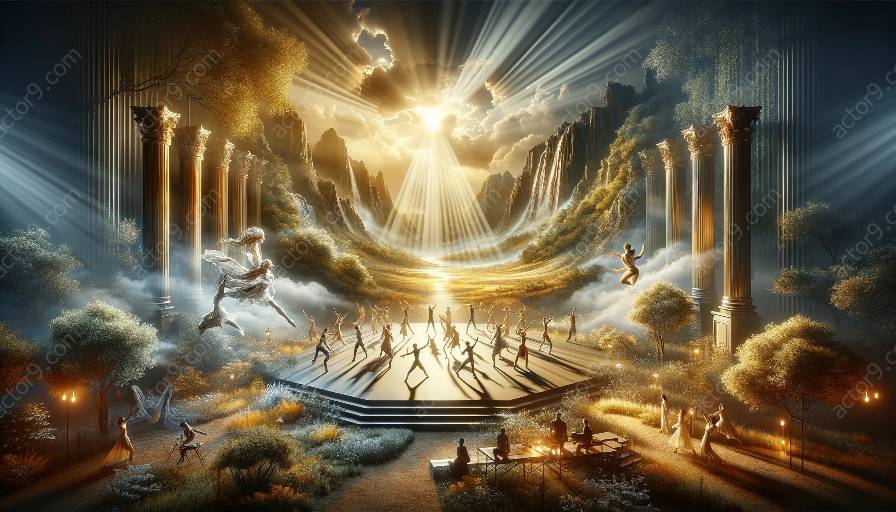Physical theatre is a unique form of performance that relies heavily on the physicality of the performers to convey emotions, narratives, and themes. Lighting plays a crucial role in enhancing the physicality of the performers in a theatrical production, adding depth, dimension, and atmosphere to the performance.
The Significance of Lighting in Physical Theatre
Lighting is a powerful tool in physical theatre, as it can sculpt the performers' bodies, create illusions, and evoke specific moods. The interplay between light and shadow can highlight the performers' movements, accentuate their expressions, and draw the audience's attention to key elements of the performance.
Enhancing Movement and Gesture
By using different lighting techniques, such as spotlights, backlighting, and colored gels, physical theatre practitioners can accentuate the performers' movements and gestures. Dynamic lighting can emphasize the lines and shapes created by the performers' bodies, making their movements more visually striking and expressive.
Creating Atmosphere and Emotion
Lighting can significantly impact the emotional impact of a physical theatre performance. By adjusting the color, intensity, and direction of light, designers can set the mood, convey emotions, and create a sense of atmosphere that complements the physicality of the performers. For example, warm, soft lighting may evoke a feeling of intimacy, while sharp, cold lighting might convey tension or drama.
Shaping Space and Perspective
The use of lighting in physical theatre can transform the perception of space and perspective. Strategic lighting can alter the perception of distance, size, and spatial relationships, allowing performers to interact with their environment in a more dynamic and visually engaging manner. Lighting can also create illusions and visual effects that enhance the physicality of the performers and the overall theatrical experience.
Impact of Lighting on Physical Theatre Performers
Lighting not only affects the visual aspects of a physical theatre performance but also influences the performers' physical experience on stage. The quality, direction, and intensity of light can affect the performers' visibility, focus, and spatial awareness, thereby shaping their physical interactions and movements within the performance space.
Visibility and Expression
Effective lighting design ensures that performers are clearly visible to the audience, allowing their physical expressions, gestures, and interactions to be fully appreciated. Proper illumination also helps convey nuances of expression, adding depth and subtlety to the performers' physical performances.
Rhythm and Dynamics
Lighting can contribute to the rhythmic and dynamic qualities of physical theatre performances. Changing lighting patterns and transitions can mirror the pacing, rhythm, and energy of the performers' movements, creating a synchronized and harmonious relationship between light and physical expression.
Collaborative Interaction
Collaboration between lighting designers and physical theatre practitioners is crucial in harnessing the full potential of lighting in enhancing physicality. Through experimentation and exploration, performers and lighting designers can develop innovative ways to integrate light and physicality, creating compelling visual compositions and immersive experiences for the audience.
Conclusion
Overall, lighting plays an indispensable role in physical theatre, enriching the performers' physicality, creating immersive atmospheres, and shaping the audience's perception. By harnessing the expressive potential of light, physical theatre practitioners can elevate their performances, engaging audiences in a captivating exploration of the human body and its boundless artistic possibilities.




































